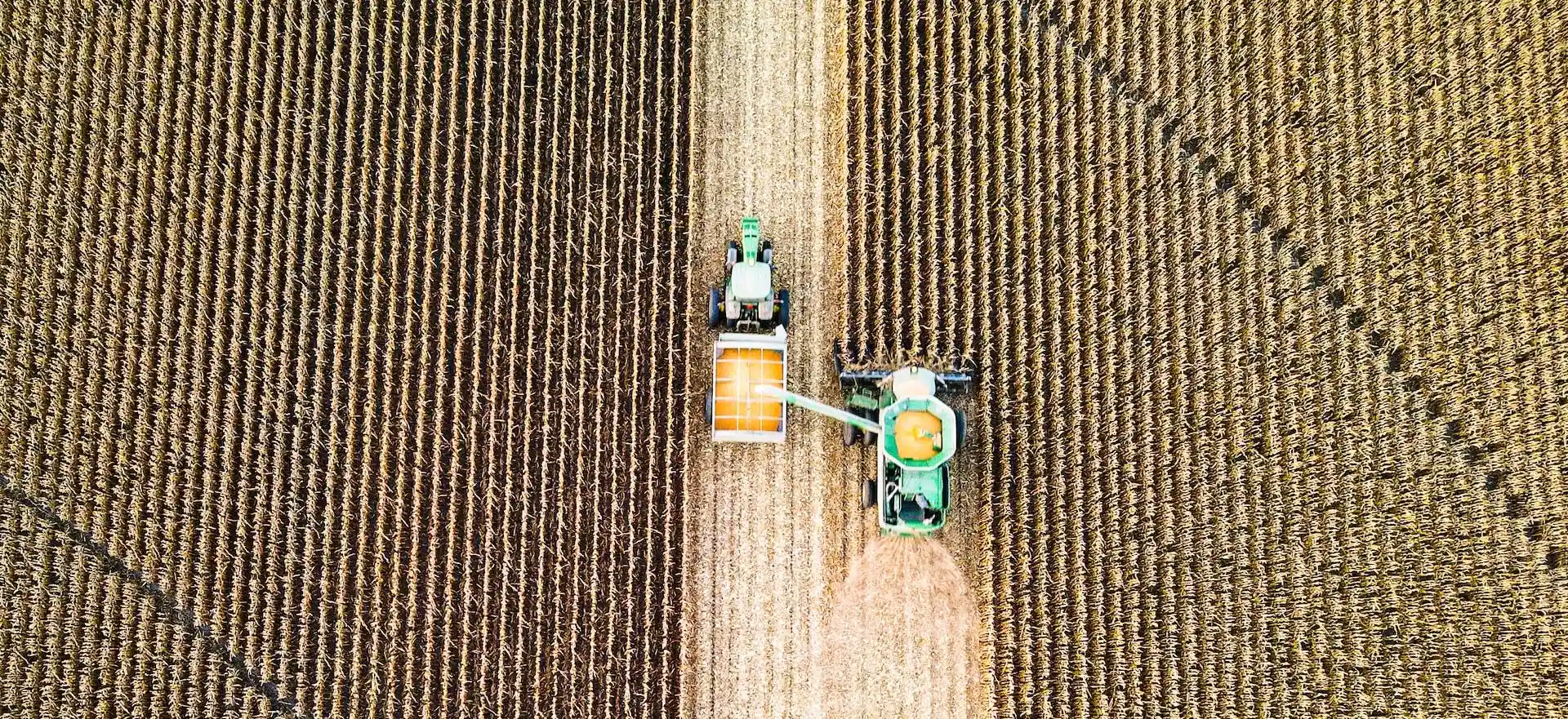
Product strategy to maximize farm revenue
Market Watcher
Case Study
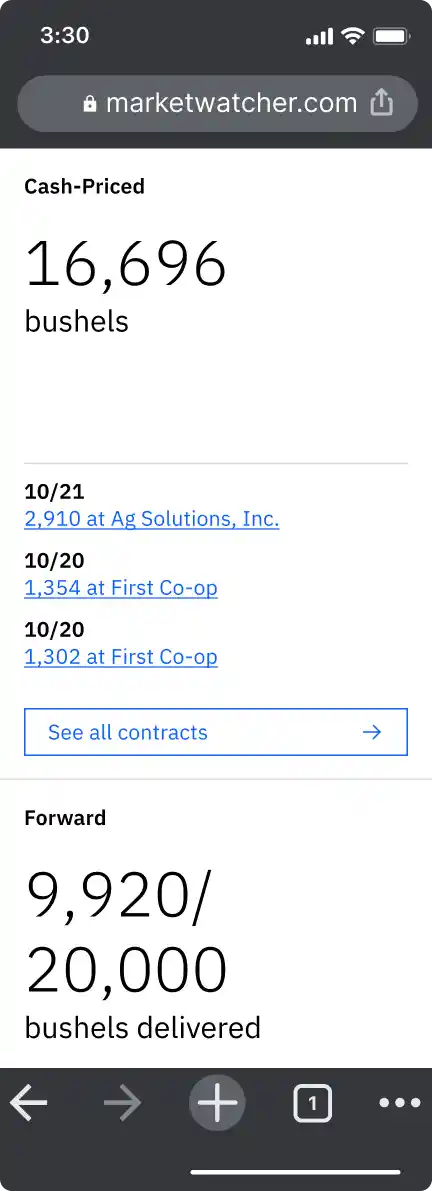
Overview
Project context
Independently completed as a part of the UX Research and Design Specialization from the University of Michigan
Highlighted methods
- Product design
- Feature development
- User research
Summary
Grain farmers need to sell their crops at high prices to make a profit.
Farmers engage in the local and national commodities markets to lock in or increase prices, but the process is complex and risky.
Solution
I identified the needs and behaviors of grain farmers when they sell their crops and hedge commodity derivatives.
I developed features to improve grain farmers’ workflows:
- Current market prices
- A market alert system
- Saved market contracts
- Projection of potential revenue outcomes
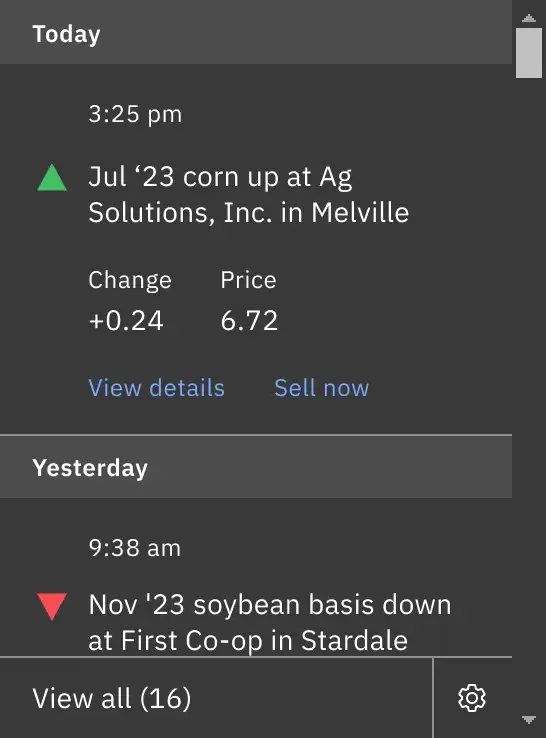
The business problem
Being a successful farmer requires thinking like a stock trader
Grain farming may seem idyllic, but a number of risk factors threaten a farm's livelihood every growing season. One factor is the volatility of grain prices.
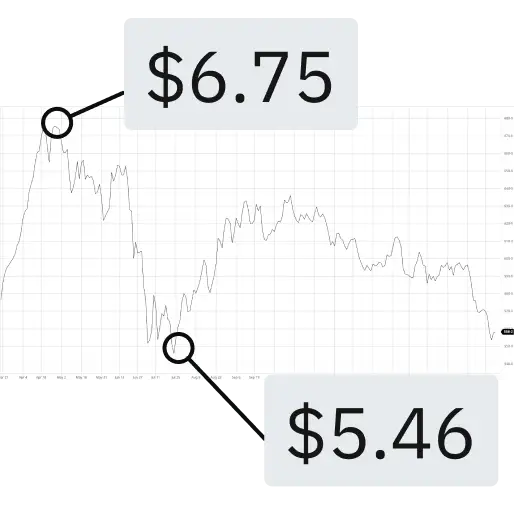
For an average-sized corn farm1, the difference in selling at the 2022 market high of $6.75 and low of $5.46 is $61,920. For a small business, that gap in revenue could be the difference between making a profit or taking a loss.
In order to reduce risk and maximize revenue, savvy farmers use a variety of strategies, including:

- Selling grain to local processors before harvest on a forward contract when grain prices are high
- Using hedging strategies by buying and selling futures and options from the national commodities exchange (CME Group)
Using these strategies requires the responsiveness and sensibility of a stock trader.
The Market Watcher solution
Increasing revenue and mitigating price risk
My application aims to improve upon farmers’ existing methods for dealing with the markets. The tasks required to handle grain marketing fall into two general groups: monitoring market prices and evaluating potential contracts.
Monitoring market prices
Farmers must closely watch the markets to see if they can sell their crop ahead of harvest when prices are high.
How farmers currently monitor market prices
- Checking market-related websites, radio stations, and TV channels several times per day
How monitoring market prices could be more efficiently completed
An alert system to send users notifications about changes in grain prices
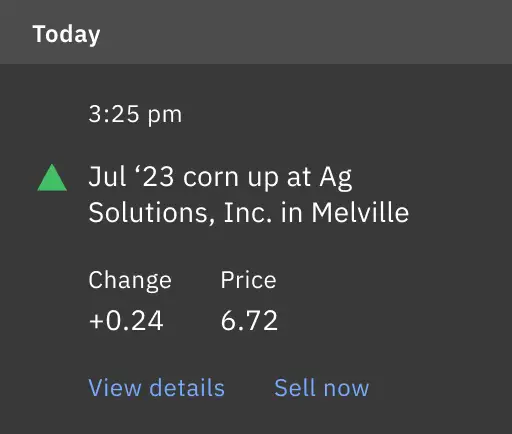
Benefits of a market alert system
- Security of knowing that market opportunities aren’t slipping by
- Saved time and energy to get the specific information they need
Evaluating potential contracts
A crucial decision point is whether or not to sell when prices spike.
How farmers currently evaluate potential contracts
- Retrieving active sales contracts and revenue statistics
- Calling grain buyers or using pencil and paper
- Deciding to sell based on what information is in front of them or what they can remember
How evaluating potential contracts could be more efficiently completed
- A system that collects information on signed contracts and projects possible revenue outcomes, including:
Overall revenue statistics for the season
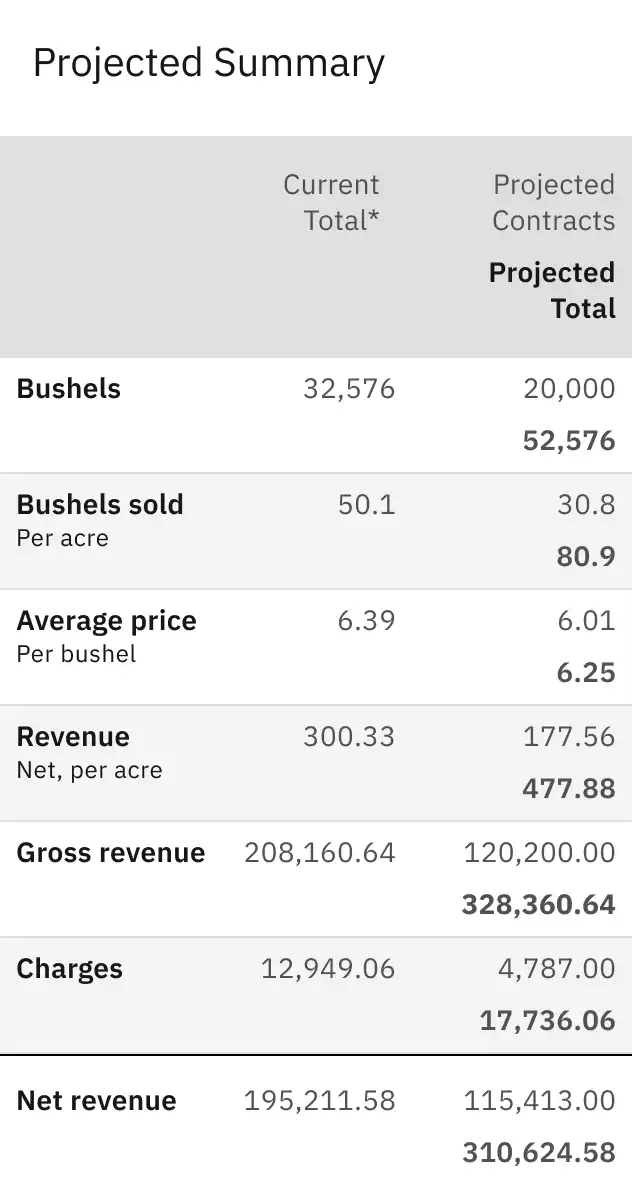
A spreadsheet-like interface to compare how different contract specs would affect overall revenue
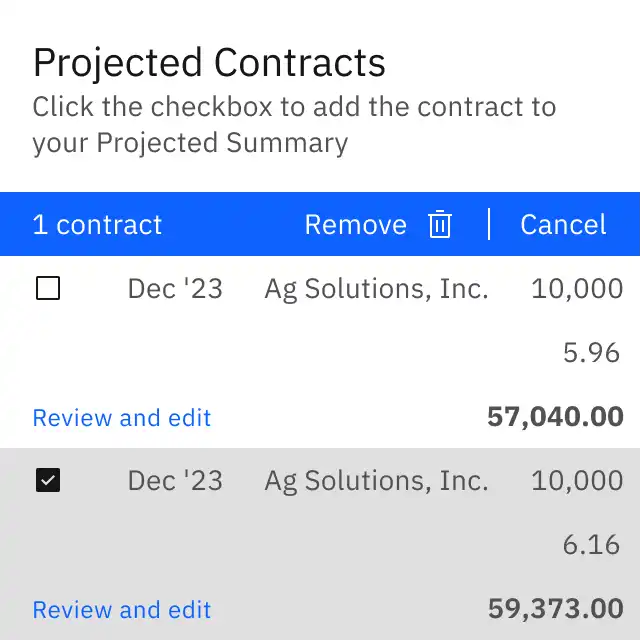
Benefits of making contract statistics visible
- Being able to see the direct effects of changes in contract prices on overall revenue
- Reducing mental overhead of decision-making by making more data available
- Easily accessing functionality on-the-go
Grain processors
Engaging the other side of the marketplace
Grain processors buy and collect grain from farmers, transporting it into the supply chain.
While testing the feature to save contracts in the app, a farmer asked me a question: "Why don't grain processors send the contracts directly to us?"
I realized that within the broader business context, grain processors could and should be incentivized to use Market Watcher.
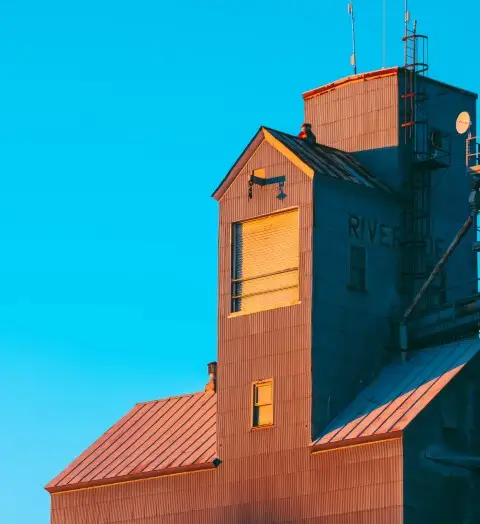
To explore this idea further, I interviewed an employee from a processor to learn about their specific needs.
From a product design standpoint, I was intrigued by the opportunity to outline additional features that would offer business advantages to processors.
These advantages include:
Sending contract specs directly to farmers
Employees at grain processors must constantly communicate with farmers in order to buy grain and remind farmers of contract details. Market Watcher could ease this problem by sending farmers details about their contracts through the app.
This feature would:
- Reduce redundant communication between farmers and employees
- Save farmers the burden of data entry, one of the biggest barriers to product adoption
Facilitating grain sales
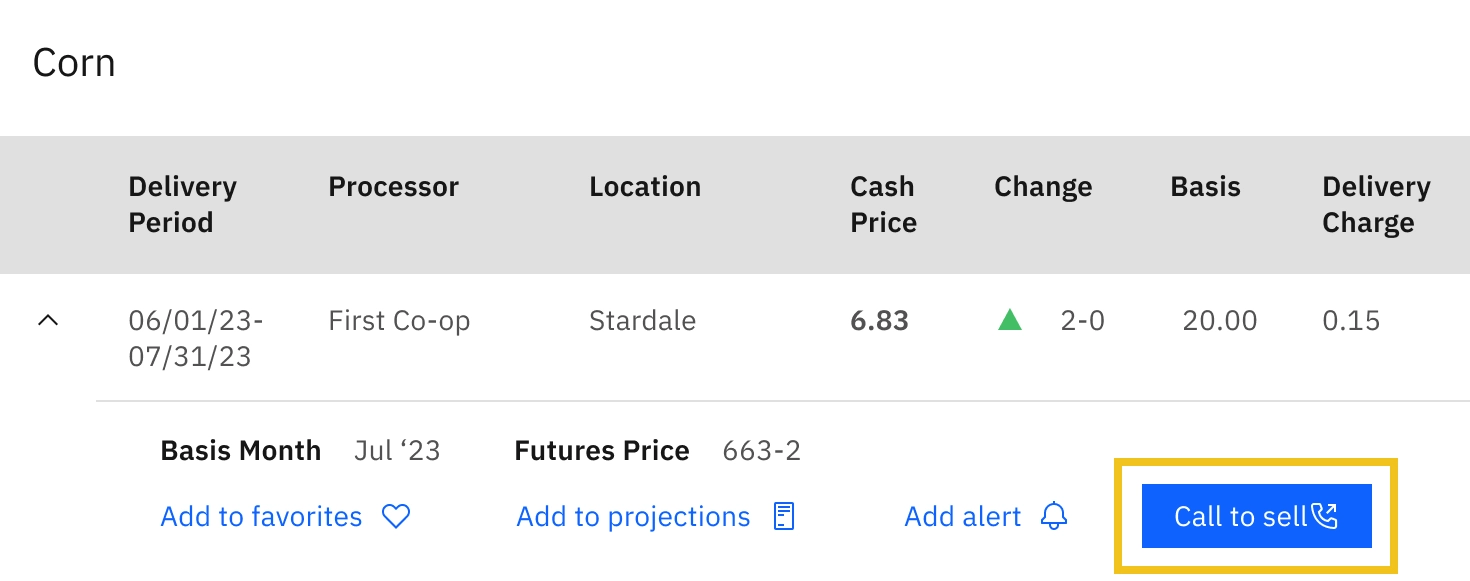
By reducing context switching, farmers could quickly go from deciding to make a sale to committing to a contract. This could result in higher overall sales for the processor.
Promoting contract offerings
Processors offer many kinds of contracts to farmers, many of which boost revenue potential for the processor. Market Watcher could be a medium to strategically promote contracts to farmers. In the contract projections feature, it could even be a way to demonstrate exactly how certain contracts boost farmers’ revenue.
On a product roadmap, my highest priority would be developing features to grant these benefits to processors.
Conclusion
Prioritizing multiple players in a marketplace
Through my research, I identified the features that add the most value to grain farmers’ market strategy. By examining the roles of grain farmers and processors, I developed additional features to incentivize application usage on both sides of the marketplace.
To explore the specifics of the design
Figma file with all views and user flows
Footnotes
- 278 acres, as of 2016. Trends in Production Practices and Costs of the U.S. Corn Sector, USDA.
Attributions
- Photo by Taylor Siebert on Unsplash
- Photo by Pixabay from Pexels
- Photo by Cody Otto on Unsplash